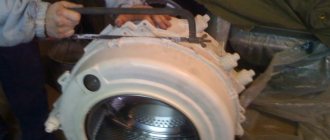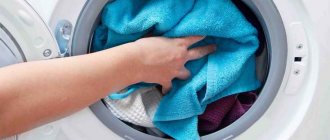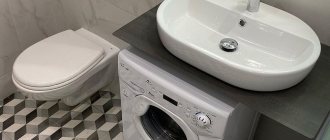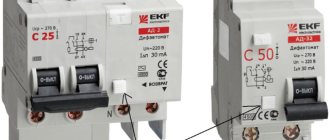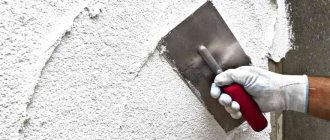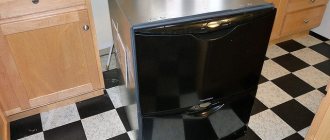So, one fine day you heard that the washing machine was making noise when spinning, drawing, draining water, or during the wash itself. If the equipment has served you for more than 5 years, this is normal, because... Each part tends to wear out over time (especially since hard water accelerates this process). But what if you just recently made a purchase and the machine hasn’t even worked for a quarter? In this case, you need to understand the cause of the breakdown, a list of which we will provide you with below.
Foreign objects
In fact, a very common reason that is encountered in most cases. You have not taken out various kinds of small items (for example, coins) from your pockets, or the metal fasteners on your clothes are hitting the drum, causing the washing machine to make a lot of noise when washing. This reason can be determined by the characteristic ringing beats on the drum.
It’s good if all the little things remain inside the drum, but if foreign objects are between the tank and the drum, you’ll have to do a little work. You need to remove the heating element and take out all the items through the resulting hole, and then put the spare parts back. In some models, all small things can fall into a special sump where a filter is installed. In this case, if the washing machine makes noise during washing, you need to find the sump cover (usually it is on the front, closed with a small door), unscrew it and remove all the trapped objects.
If the cause of the error is found
Let's say the cause is discovered, but what to do next? Of course, the specific course of action will be determined by this or that breakdown, but experts give general advice in order to eliminate the most common problems:
- Clean the drain filter as thoroughly as possible, making sure to remove all kinds of objects from it.
- Rinse the previously disconnected drain hose with strong pressure of hot water.
- Clean the siphon and drain hose.
- If you have a voltmeter on hand, you need to check the voltage at the drain pump, water control sensor and electrical controller.
- You can try turning off all sensors and then turning on the washing machine. Then disconnect and reconnect all sensors again. Restarting the system in this way can solve the problem.
In any case, if your machine one day shows such an error, you should not panic, but on the contrary, you need to pull yourself together and find the cause of the malfunction.
The transport bolts are not unscrewed
The instructions pay special attention to the mandatory unscrewing of the transportation bolts after delivery of the equipment to the installation site. Despite this, most people forget to unscrew them, resulting in noise during operation, which is accompanied by the noise of the washing machine.
The diagram shows where the bolts are installed:
All you need to do is unscrew them and check their functionality again.
We draw your attention to the fact that you should not throw shipping bolts in the trash, as many do. If you decide to transport the washing machine from place to place, they must be screwed in, otherwise the internal mechanism may be damaged during transportation.
Combination in new cars
LG units of later years are not subject to this method. The electronic module contains a different algorithm for connecting or muting the sound of the washing machine. In addition to the “Timer” key, you also need to press “No folds” and hold for exactly 3 seconds. Otherwise, nothing will work. Models of LG washing machines that this method is suitable for:
- series F(E/M) 1096SD, 1296SD, 80B8ND, 10B8ND, 12B8ND, 1096ND, 1296ND, 10B9SD, 12B9SD, 10B8SD, 80B9LD, 10B9LD, 12B9LD, 80B8MD, 10B8MD, 12B8MD with numbers from 1 up to 9;
- M1222ND with numbers from 1 to 9;
- F series 1096WD, 1296WD with numbers from 1 to 9.
Attention! Finding out the series, name and number of your specific washing machine is very simple. This information is written on the first pages or even on the title page of the instructions. If the user manual is not saved, you can find the corresponding mark on the body of the washing machine.
If the sound signal stops working, the most difficult thing is to find out the full name of your model. Once you're done with that, the rest is simple. Pressing 1, 2 or 3 keys and holding for a few minutes is not at all difficult.
Interesting:
- Rating: 5 Best Washer and Dryer Sets
- How to turn on the sound signal on an LG washing machine?
- How to turn off the beeping sound on your dishwasher
- How to turn off music on an LG washing machine
- Which is better: LG or Indesit washing machine?
- Which Bosch washing machine is better to buy?
Reader comments
- Share your opinion - leave a comment
Incorrect installation
An equally simple reason for loud operation is improper installation of the washing machine. Even a slight misalignment can cause vibration, which occurs when equipment operates at high speeds. As a result, you hear an unpleasant sound, which can easily be removed by twisting the legs to a strictly horizontal installation level.
The correctness of the work done can be checked using a building level. It is the crooked housing that causes the washing machine to vibrate and bounce on the floor, causing it to be heard making noise.
Elimination
Most often, the solution to a problem in the event of a washing machine breakdown is to replace the part, but when dealing with the LG brand, many things can be done with your own hands
The most important thing is not to forget about safety precautions before making repairs, since the most important components operate when connected to electricity with a voltage of 220 volts
If there is a problem with draining water, you should first check the integrity of the pump. It may not necessarily be damaged; problems with drainage also arise in the event of a normal blockage. First you need to drain the water, otherwise everything will end up on the floor. Near the round plug behind the drum or behind the panel (depending on the assembly version) you can find a thin hose plugged with a small plug. Having pulled it out and uncorked, all that remains is to carefully drain the water into any suitable container.
There is another fairly simple way - lower the drain hose to the floor level. Only after draining the water can you remove the pump and view the condition of the drain system. In most cases, regular cleaning of debris manually or using special products helps.
If the pump is broken, then you will have to do a little disassembly of the device:
- Be sure to remove the plug from the socket;
- pull out the dispenser; there is usually some residual water left in it, so it’s better to tilt the machine;
- remove the bottom panel and place the machine on its left side (in most LG machines the pump is on the right).
Before removing the pump, an obligatory step is to test it with a multimeter. It also makes sense to check the integrity of the electrical circuit or pump.
If the pump wears out, it will also need to be replaced. To do this, remove the dispenser in the same way and remove the bottom panel. Regarding the latter, a regular Phillips screwdriver may not always be suitable. For reassembly, it is best to photograph or mark all terminals and hoses. The hoses are secured with clamps, the filter plug is unscrewed when everything else has been turned off. There should be no problems with selecting a drain pump; they are usually universal and suitable for all modern models.
Before reassembling, be sure to clean off dirt and deposits. First, the pump is screwed on, then all the hoses and wires are connected back, after which the plug is closed. You can verify its functionality by simply running a short operation. For example, spin. And if everything is in working order, you can put the machine back together.
If the water heater breaks down, it needs to be replaced, but before doing this, you must check it with a multimeter or similar device. The heating element itself is located at the bottom of the tank, a grounding wire and several power wires are connected to it to supply current. After disconnecting the terminals, you can check the device for functionality.
To remove the device, simply unscrew the nut in the middle and press the pin a little. Next, remove the rubber seal. This must be done extremely carefully so as not to break the seal.
A replacement heater is also purchased with a seal included. If a temperature sensor is installed in the heater, it is not necessary to change it along with the entire set. It is enough to check the effectiveness of the work. Inside the tank for installing the heater there is a special bracket into which it must be installed. There should be no scraping sound when spinning the drum after installation. It makes sense to fill the drum with water and make sure that the seal does not leak.
If water is drawn slowly, it makes sense to check and clean the filter; it is located behind the inlet hose at the entrance to the machine.
If there is no water in the machine at all, in addition to checking and cleaning the filter, the valve is also tested using a multimeter. It is located behind the top cover, which can be easily removed by unscrewing a few screws.
If the machine does not wash, but the water gurgles, this is a sure indicator of wear on the mechanical part. Before replacing the valve, be sure to photograph the wires. The valve itself is removed after disconnecting all the wires and hoses; it is secured with special latches that need to be tightened by turning it slightly. When installing the part, you need to proceed in the reverse order.
If, on the contrary, it collects too much water, then a software reset may not help - you will need to change the pressure switch to a new one. The sensor itself is visible immediately behind the top cover and can be removed after disconnecting the terminal. But before that you can blow out the pressure switch. If a characteristic click is heard, it means the part is working properly and does not need to be replaced.
Bearing wear
A more complex breakdown that will require certain skills to fix. Bearing wear can occur if the seal that prevents water from entering is damaged. As a result, water seeps into the bearing, causing corrosion and failure.
The malfunction can be determined as follows:
- rusty streaks form on the outside of the rear cover of the tank;
- the movement of the drum on the shaft is uneven if you push it a little with your hand;
- During the spin cycle, a whistling and strong hum is heard.
To make the replacement process clearer to you, we provide visual instructions:
Video tutorial on replacing washing machine bearings
Why does the washing machine click but won't turn on?
Characteristic sounds occur during such breakdowns:
Shutting off the water supply tap
Before troubleshooting, check to see if the tap supplying tap water to the machine is turned off. Often it is this simple problem that causes the washing machine to not turn on and make clicking noises.
Malfunction of the hatch locking device
In all modern devices, the UBL - hatch locking device - is responsible for hermetically closing the door. Inside it there is a thermoelement, which heats up and expands when the machine is turned on, and a bimetallic plate. When heated, it bends, automatically blocking the hatch. Over time, due to wear, the plate loses its qualities and the UBL does not work, as a result of which the wash does not start.
Time relay defective
The timer is one of the main parts of the washing machine, which is responsible for selecting the washing program. If it breaks down, the machine will not be able to start the cycle, and characteristic relay clicks are heard, but the machine does not turn on. The programmer may fail due to sudden voltage surges, careless operation of equipment, or moisture getting on the timer gears.
Power button failure
The most vulnerable part of an automatic machine is the electronics. The buttons on the panel are constantly exposed to external influences; they may be exposed to powder or rinse aid. As a result, the buttons may stick, become stuck, and the contacts leading to them from the electronic circuit may also be damaged.
Damage to the control module
Some control module components may oxidize, burn, or become damaged over time. This is a serious problem that requires flashing or completely replacing the electronic board. This work should only be carried out by a specialist; it is not recommended to take any action on your own.
Malfunctions in the interference filter
The noise filter is a capacitor that supplies current to the unit. To check that this is really the reason, you will need to remove it from the machine by disconnecting the wires. If it fails, upon external inspection, dark spots, melted insulation, charred contacts, and a burning smell will be visible.
Diagnosing a breakdown is a complex procedure that requires a professional approach. This type of work requires special tools and skills. If you do not know the structure of the washing machine, it is recommended to contact a specialist. Incompetent repairs can lead to complex problems.
Loose pulley
If during washing, and especially spinning, you hear intermittent clicks, which are the cause of an extraneous sound during operation, then most likely it is a loose pulley. There is nothing dangerous in such a breakdown; you need to remove the housing cover and tighten the bolt (or nut) using a wrench. Please note that in the event of such a breakdown, the washing machine will make noise at both low and high speeds.
It is recommended to first completely unscrew the loose part, place it on the sealant, and then tighten it thoroughly with a wrench. In this case, the pulley will not weaken in the future.
P.E.
A PE failure may occur during washing, spinning or rinsing. In the future, the failure occurs constantly.
Water sensor problem
The presence of a PE code means a problem with the pressure switch. Due to a problem, the sensor cannot determine the amount of water in the tank.
Checking the water pressure in the water supply
Lack of pressure or excessive pressure often leads to an error. If you notice a failure, you should check the pressure level.
Pressostat performance
In most cases, the cause of the error is a broken pressure switch. If the pressure switch tube is clogged, it is enough to blow it out, but in other situations a replacement is required.
Weakened counterweights
By analogy with the previous problem, the issue of weakened counterweights is also solved. You must open access to the bolts and tighten them, after which the extraneous noise from the washing machine should disappear.
There may be another type of failure associated with counterweights - their complete destruction. In this case, the sound will be much louder and broken parts will have to be replaced.
How to tighten the counterweight fastenings is described in the video lessons:
Tightening the Upper Counterweight
Tightening the lower counterweight
What to do if the washer clicks
In each of the mentioned cases, with the exception of decorative items of clothing, the repair process requires certain knowledge in the field of repair, since if done incorrectly, the machine may simply not turn on again.
Important! Before carrying out independent repairs, you must check that the washing machine is disconnected from the power supply.
The hardest part is determining the cause of the problem. First, you should check the fastening of the bolts, tighten the loose parts and place some of them, such as the pulley, on sealant.
A timely repaired machine will last for a very long time.
However, it would be best to call a specialist to your home. The technician will conduct diagnostics and accurately identify and eliminate the source of the sounds.
Subscribe to TechnoCouncil on social networks so you don’t miss anything:
The surge protector is unscrewed
A fairly common cause of knocking noise in a washing machine is a loose power filter. This device is necessary so that the electrical impulses generated during the operation of the washing machine do not turn into parasitic interference from the household electrical network of the apartment. Simply put, so that the lights in the house do not blink due to the constant and frequent switching on and off of the electric motor and heating element of the washing machine.
In fact, this defect is not considered a serious breakdown, since it does not lead to further damage to the mechanisms of the washing machine. Physical impact from vibrations and shocks on the wires and the surge protector housing can lead to breakdown. As a result, anyone who touches the washer may receive a noticeable shock.
To eliminate the defect, just screw the surge protector into place. For most models, it is located at the top of the case near the hole for the power cord. To access, you need to remove the top cover, as mentioned earlier.
How to prevent knocking in the washing machine drum? Tips and tricks
- Install the washing machine correctly. Check how level it is using a building level, and if necessary, adjust the legs or place silicone stands.
- Distribute the laundry evenly, do not overload the drum and do not let it run idle, washing, for example, only one T-shirt.
- Do not place heavy objects on the washing machine.
- Do not move the washing machine while it is running.
- Check and clean filters periodically.
- Respond in a timely manner to any malfunctions, failures, or unnatural sounds.
- Entrust equipment repairs only to qualified technicians. During repair and maintenance work, use only original spare parts.
- Strictly follow the recommendations set out in the instructions supplied with the washing machine from the manufacturer.
By following these simple tips, you will ensure the longest possible, high-quality and safe operation of your washing machine, regardless of its brand, model and year of manufacture.
Recommendations
As practice shows, some causes of washing machine noise can be prevented.
Here are three simple tips that you can follow to avoid the washer buzzing:
Some causes of the unpleasant sound made by a washing machine can be eliminated yourself at home. For example, solve the problem of incorrect installation or remove foreign objects.
If we are talking about wear of individual parts or their malfunction, it is easier to contact a specialist.
Source
We turn off the sound in washing machines of other brands
"Bosch"
To turn off the sound in a Bosch washing machine, you should try the following step-by-step algorithm:
- turn the selector one notch to the right;
- hold down the lower right button and turn the knob to the next mark;
- change the volume level of the keys with the right middle button (0 - the sound is completely turned off);
- by turning the selector to the right to the third division, set the volume of the melody that accompanies the end of the wash (0 - complete shutdown);
- return to the initial position for the machine to remember the entered settings.
If the actions do not bring the desired result, you should try again from the first step until the programmer returns to its original position to save the parameters.
Bosch washing machine panel
"Samsung"
In Samsung SMA, the sound is turned off by simultaneously pressing the “Spin” and “Option” buttons. They must be held until the crossed out speaker icon lights up. Resumption of the mode is accompanied by a sound signal and the indicator light turning off.
This setting then applies to all programs.
The laundry inside the drum is unevenly distributed
This problem often affects early models. The clothes bunch up in a big ball and hit the body during the washing process. As a result, an imbalance appears. To correct the situation, you need to pause the washing program and lay out the laundry more evenly. It is worth mentioning that new models from Indesit, Ariston, Samsung, LG and others do not have such problems.
Spring breakage
In fact, these are the same shock absorbers, but located on the opposite side. They are necessary to stabilize the drum in the housing.
It is difficult to diagnose their failure on your own, since the symptoms are the same as for a malfunction of the shock-absorbing system. To verify the problem, you need to disassemble the case and look.
You cannot replace the springs yourself - incorrect settings will lead to imbalance and “jumping” of the drum.
Faulty parts
The reason that the drum knocks when the washing machine picks up speed may be a malfunction of the springs and shock absorbers. These devices are needed to compensate for vibration and provide balance to the structure. Over time, they can wear out, leading to an unpleasant knocking noise. Plus, the springs stretch and become less elastic. Because of this, the tank moves and hits adjacent parts during washing. If you suddenly hear a knocking sound from the washing machine during the spin cycle, you must stop it immediately. Then disconnect from the network and carry out diagnostics. If the guesses are confirmed, the failed elements will need to be replaced.
Checking the sewer and drain hose
After it has become clear what this error means, it is necessary to move on to correcting the situation. The first thing to do is to make sure there is no major blockage in the sewer lines. It would be a good idea to arm yourself with a long wire, bent at the end, and clean the drain to the maximum possible length.
If the machine is connected through a siphon, it must be disassembled, the debris accumulated during operation must be removed, and washed with running water.
Often the machine is drained directly, without a siphon; in this case, special attention should be paid to the connection point - this is an ideal place for blockage to form.
Next in line should be the drain hose. Often, trying to rationally use the small area of the apartment, the car is pushed into a corner, as a result of which it bends. At the bend, a blockage forms that water cannot overcome. Another option is possible - the hose is too long and something heavy has been installed on it, or they are constantly stepping on it. In any of the above situations, there is only one way out - you need to change the hose.
Even if no physical damage is visible, it would be a good idea to remove the hose and rinse with running water. A clean drain system will reduce the load on the pump and contribute to the long life of the machine as a whole.
Preventing blockages so that the pump does not make noise
To prevent unnecessary noise from occurring due to foreign objects, prevention is needed. You don’t have to do anything supernatural, just follow the basic rules for using the machine:
- soften water with special means;
- clean SMA parts from scale;
- Clean the filter after every 5th wash (or at least once a month);
- sort clothes, check pockets.
We hope you now know what to do to stop your washing machine from making noise anymore. If you still have questions, you will find comprehensive answers to them in the video:
Source
Counterweight (load stone) displacement
The washing machine tank is made of plastic, so under the influence of a drum loaded with laundry, it vibrates quite strongly. The counterweight itself is a cement or plastic block that is attached to the tank and stabilizes it. That is, it makes it less mobile under high dynamic loads on the drum. Displacement or destruction of the counterweight is one of the simplest, but far from harmless, breakdowns that need to be quickly corrected. This malfunction is diagnosed as follows: the drum begins to knock when spinning at maximum speed or with a large load, and the sound comes from the bottom.
If the bolts holding the counterweight are loosened or completely unscrewed, the counterweight may become dislodged or the drum may have a lot of play. This problem can be fixed quite simply, you just need to tighten the bolt. And to prevent this from happening again, you can take the bolt a little longer and put a lock nut between it and the washer.
If the counterweight is destroyed, the situation is much more serious. Cement stone is practically irreparable. You need to go to a repair shop and just buy another one.
You can get to the counterweight to secure it (adjust it) as follows:
IMPORTANT! Before disconnecting the contacts on the dashboard, it is advisable to photograph them with a mobile phone, so that later you do not play the sapper of which wire to plug in where
Again, on some models the counterweight units may be located at the bottom, while on others they may be located at the top or rear. The exact position can be found according to the diagram in the data sheet, which is attached to each washing machine.
